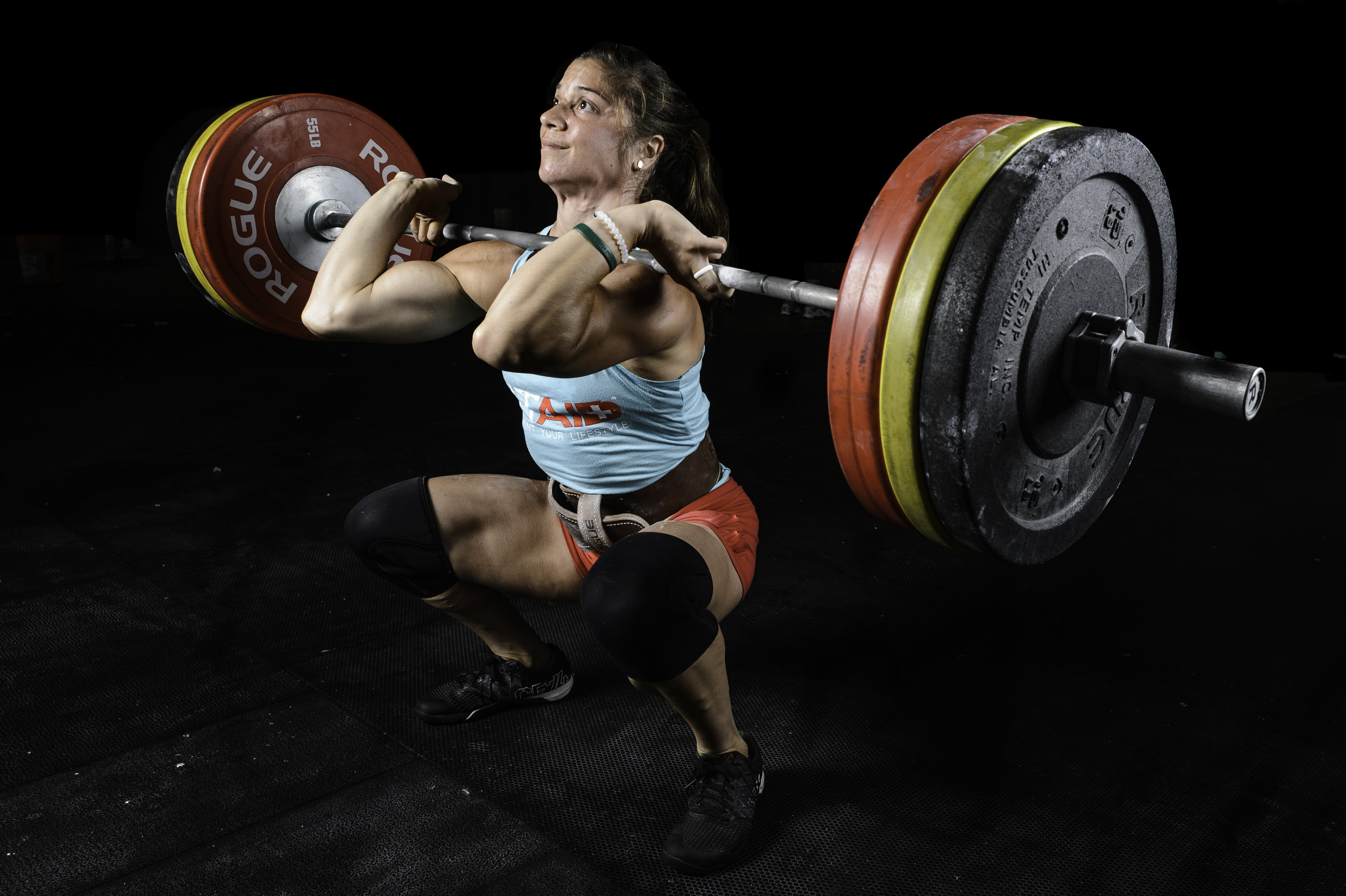A few weeks ago I answered my number one asked question, how to make money shooting CrossFit. I got a lot of great feedback and hope that got a few people some paying jobs. This week I want to follow-up with what I think might be my second most asked question, do I need "pro" gear to be a pro? If you don't want to read ahead, the answer is an emphatic, 'no."
Pro Gear vs. Cheap Gear
First off, what is "pro gear." In my mind, pro gear is the stuff with the big price tag. In terms of camera bodies, once you start getting into full frame cameras, and especially the 1DX series on the Canon side and the D4/5 series on the Nikon side you're in the "pro gear" land. You're going to see camera gear that is very expensive as well with a better build quality. In terms of specs, they have all the megapixels and focus points, and can do everything but take the photo for you. What makes a pro lens? Fixed apertures are your first clue (f2.8 lenses) as well as big price tags. These lenses focus faster, are sharper, and are built better.
Let's be clear though with all this fancy stuff, pro cameras don't take photos for you and pro cameras don't work outside the rules of the exposure triangle. Because of that, there is simply no replacement for knowledge. You can put a "pro" setup in the hands of a first time photographer and they will get worse-than-iPhone quality photos. You can put an iPhone in the hands of a pro photographer and they are going to deliver professional-level shots. Don't believe me? Watch the awesome series DigitalRev has put together, the Pro Photographer, Cheap Camera Challenge.
So what's the point of pro gear? It makes life easier to get the shot. Here's an example. I actually was playing around with my D5100 with the kit 18-55 the other day, my first DSLR, and the camera I used to take the first photos I ever sold. I was in the gym snapping away and needed more light, so I cranked up the ISO to 10,000. Whoops, that camera maxes out ISO 6400 and it looks like total mud. Fail number one. Next one of my buddies was going to setup for a snatch. As he went through the lift, I snapped away to try and get the whole sequence. By the time the bar was half way over head, the camera slowed down and stopped shooting. Error: buffer full. Oh right, the buffer on low-end cameras fills up after a few clicks in a second when shooting RAW. Lastly, I started trying to get some good close-ups without moving my feet, I zoomed the lens, kept snapping, and looked down and saw the photos were horrifically underexposed. Right.... that kit lens that comes with the camera is variable aperture, so as I zoom in, the aperture closes down.
Now, switch over to my "pro camera' my Nikon D4, with a 24-70 2.8. Even with this body over four years old now, I can crank the ISO to 12,800 and barely see any noise in my image. I've almost never been able to fill the buffer, no matter how hard I've tried when shooting bursts during olympic lifting. With my fancy zoom lens, the aperture is fixed so whether I'm at 24mm or 70mm the exposure stays the same. Shooting with this camera just makes my life easier. It doesn't get me in the right position to nail the shot, and it doesn't give me the knowledge to know how to expose the image properly.
All that said, I could still nail the photo with the shit camera, but it is just going to take a little more effort. That effort though, does distract from the act of creating a good image. I'm not able to focus on composition as much, I'm not able to feel out the room as much. I might have to compose the shot only using the center focus point because that is the only one that focuses quickly. Because my attention become split, it means I might not be able to take the best possible image. Further, in some situations, that crop sensor body and crappy lens might simply be in capable of working in extreme situations. No matter how much skill someone has, if you're trying to shoot fast action in a very dark room, you are going to need a camera that can get its ISO over 10,000. You're going to need a lens that has an aperture wider than f/4. In that nightmare scenario, it just doesn't matter how smart you are, you need the gear to execute.
Gear Buying Tips
Let's talk about what I think of a few different setups and what you should consider getting if you're starting out. A few basic rules. I almost always get everything used, that includes camera bodies and lenses. It is an easy way to save a few hundred dollars on basically new items. I love using the Amazon marketplace for used items because you get a pretty great return policy if the gear turns out to be a lemon. I also think you should sell anything you don't need. Don't just let lenses and old gear depreciate. Flip it for something newer.
I also think you should buy the right thing once, and not just keep incrementally getting slightly better stuff. For example, there's a 70-200 f/4 and 70/200 f2.8. The 2.8 is one of the essential sports photographer lenses. Everyone should work to get one in their kit. I wouldn't ever recommend buying the f/4, even though it is so much cheaper. Save your pennies and buy the 2.8. The lens will pay for itself, and if you don't have the cash flow coming in from jobs, you shouldn't be buying pro gear like that anyways.
My guiding rule which I've stuck to for five years when buying gear is this. Does me not having this lens/camera body / light / gizmo mean I can't get a shot or mean I can't book a job? If the answer is YES, meaning I was unable to do a job, or unable to book a job because I didn't own a piece of equipment, that's a no brainer. Amazon prime, buy buy buy. If the answer is no, I'm not going to buy it. The only reason I may want it is as a toy or because I'm obsessed with camera gear. Either one of those answers is not a way to run a business.
So what sort of gear should you get to start off and what gear should you work towards? Lenses are more important than bodies. Better lenses on cheaper cameras deliver better results than cheaper lenses on better cameras. Because of that, I basically don't care what camera body you get. New ones come out every year at all price points. Once you start having a stable income from photography -- even a few hundred bucks a month, get a full frame camera. The quality jump is huge.
Lenses. These do not change any where near as quick as bodies and you'll use the same lenses many years if you buy quality. The two best lenses to get right away are the 50mm 1.8 and 35 1.8. These prime lenses are fantastic and extremely cheap. Shooting in an indoor environment, that 1.8 will allow you to get a ton of extra light in the camera and allow you to make up for camera bodies that don't have high ISO capabilities. You will also have to force yourself to learn what composition is and how to zoom with your feet. Buy Sigma lenses. What they are putting out now is incredible, and rival the Nikon/Canon equivalents in many regards and are generally half the price.
From there, the two essential lenses all sports photographers should have are the 24-70 2.8 and 70-200 2.8. If you mostly shoot indoors, go for the 24-70 first, if you're mostly outdoors go for the 70-200 first. With one zoom lens and a prime lens to cover yourself in extreme lowlight situations you have a kit that you can do anything from sports to portraits. What you can't get overnight is practice, experience, and knowledge. That's what you really need to invest in to get the most out of the gear you have.
My point in all this gear talk is this, every photo in this post was shot on a five year old camera body, and half the shots even had the kit 18-55 f3.5-5.6 lens on there. (Except of course the shot of the D5100). Right now that setup costs $200 if you can even find one new and in stock. The other half of images I used a Sigma 35 1.4 lens on the same body (yes, the lens cost about four times the price of the camera body). The results though even on such a cheap camera body were great. I was in an extremely low light gym environment and able to get solid action shots during a group class that I'd be comfortable selling to a client. Do you need pro gear to be a pro? Hell no, you just need to know how to shoot and you can get pro results out of any setup.
If you like what you've read, please share. Feel free to post some content suggestions below so I know what you're looking for in my next post. For bookings email shaun@superclearyphoto.com. And as always, follow @supercleary on instagram and SuperClearyPhoto on Facebook.

























































